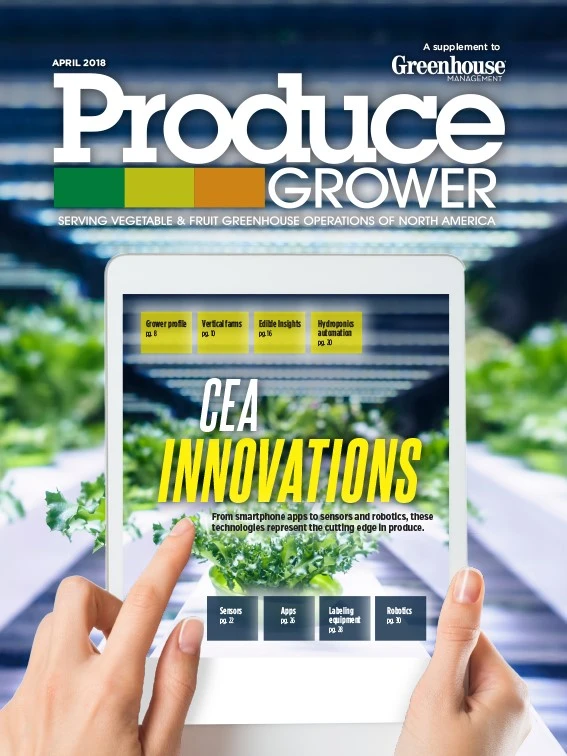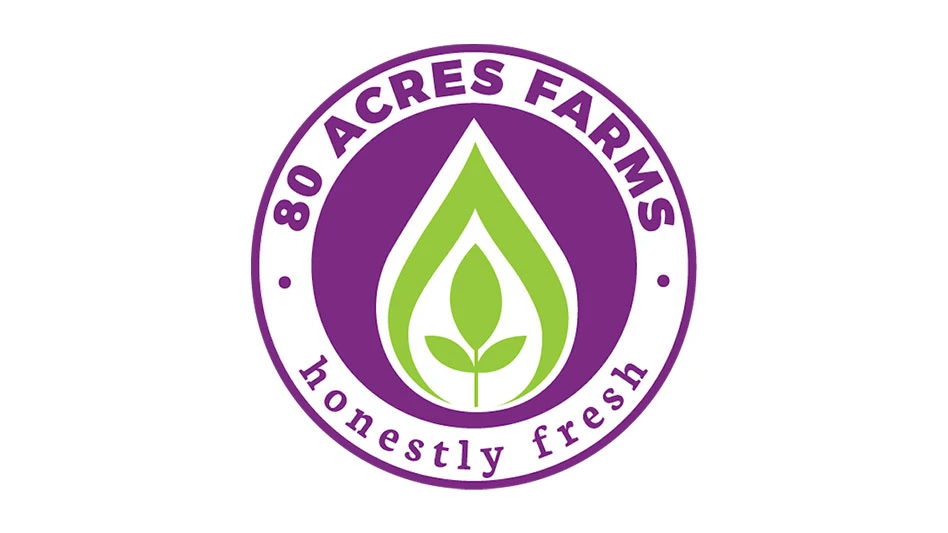
Someday plants may be able to tell us if they need water and nutrients, or if they’re not feeling so well. Sound absurd? One company is experimenting with tiny strips that attach to plants that can relay this information. The technology is being tested with outdoor agriculture. For now, though, growers have access to tried and tested technology that will help reduce operating costs and produce a better crop.
I got my eye on you
Sometimes it’s hard, if not impossible, to be everywhere at once in a greenhouse, especially when your houses are measured in acres.
Luna, created by a Seattle-based company called iUNU, offers growers an extra set of eyes and more. This high-tech system features mobile and stationary cameras and monitors that can keep an eye on each plant in your house, no matter how big your operation.
“We can help with the challenges that large-scale operations can have trying to monitor everything in large facilities or even on multiple sites,” CEO Adam Greenberg says.
The camera sensors run along rails above the plants in a greenhouse. Looking down on a crop, they do more than a camera watching people move about in a city. You might call them smart sensors because they know what they’re looking for in a crop.
“Plants don’t always grow in a linear fashion,” Greenberg says. “We had to know how that plant grows, what it is supposed to do.” He says that’s why it was important to tap into the expertise of horticulture professionals as well as techies.
In addition to spotting insect and disease problems in a greenhouse, the technology can track inventory, making the most of available space on the benches, determining when to harvest, and planning and recordkeeping, according to Greenberg. It can also alert growers when it spots discoloration due to chlorosis, especially in places where a grower might not be able to see it, such as the center of the benches. While it may reduce the need for labor, it also has the potential to identify the best workers.
“We know this is a highly competitive industry for workers. There is weekly turnover of employees,” Greenberg says. “With this technology we can manage the workforce more efficiently and also know who our good workers are and what they’re best at.”
iUNU partners with growers to get the system up and running, assuring that everything is in place before they turn over the keys, or in this case, the password.
“We’re investing in their infrastructure,” Greenberg says. “They’re only paying us when we turn the system on, thus avoiding any capital expenditures.”

Measuring all types of light
If a straw poll of produce growers was taken, it would most likely show that lighting is one of the top concerns with growers, whether that lighting comes from the sun beating through the poly or artificial lighting in a converted warehouse.
“To date, the prevalent approach for supplemental lighting appears to be ‘What is the growing area?’, ‘What is the desired light level in µmol m-2 s-1?,’ ‘And how many light fixtures are needed to meet this requirement?’” says Ian Ashdown, senior scientist at British Columbia-based SunTracker Technologies.
Ashdown says that coming from the architectural world of electric lighting and daylighting design, there are many more factors horticultural professionals can use to determine the quality and quantity of light that will reach the leaf canopy of the crops (and when during the day and year).
The technology becoming available can help growers make decisions regarding lighting in real time. Light varies greatly in a greenhouse, and this technology can measure and interpret it all and make the information useful for greenhouse operators.
The Cerise 365 from SunTracker is a software technology that uses both climatic data and technical data to come up with “light recipes” that manufacturers and designers can pass along to growers.
More specifically, Cerise 365 technology uses typical meteorological year (TMY) weather data for 2,000 locations worldwide to calculate site-specific daylight availability based on many variables, including building orientation. This data is valuable during the greenhouse design phase when decisions are made about where to locate a greenhouse.
According to the manufacturer, the technology can calculate “in seconds” daylight availability at any location in the greenhouse on an hourly basis throughout the year. This information can greatly assist greenhouse designers and manufacturers as they help growers make important decisions and invest their capital.
This technology comes from research and an understanding of architectural lighting and issues that affect lighting in the varied situations in the horticultural space, including the variations in light coming in through different types of coverings.
“We are currently working with several manufacturers to provide them with a better understanding of the issues, but there are many more,” Ashdown says.

Keeping an eye on tomatoes
All eyes are on tomatoes at Texas-based NatureSweet. The tomato-producing company is using artificial intelligence in some of their houses to monitor its tomatoes 24/7, rather than once a week as they did before investing in AI. The result has been a reduction in labor costs and an increase in harvests by two to four percent.
The technology, developed by the Israeli digital farming company Prospera, consists of 10 cameras installed in the ceilings of the houses that are continuously snapping pictures of the crop below. The software has been programmed to spot trouble, such as an insect infestation or wilting plants before it can get out of hand.
Back at the office, workers can access computer screens for those houses that currently have the technology installed, and more importantly, where there might be trouble brewing. Little red dots on individual plants indicate a pest infestation.
Perhaps the real value of AI in this case is the ability to compile data that can be used to make future growing decisions. That data is available to anyone in the company who has the accompanying app.
NatureSweet’s chief innovation officer Adrian Almeida is confident the new technology will eventually improve tomato yields by 20 percent. The technology, which he admits is still a work in progress, should help save in inputs of water and insect and disease controls as better monitoring of crops is achieved.
“It’ll be better for the environment and for the customer,” Almeida told CNN in an interview.
Daniel Koppel, the founder of Prospera, was originally interested in predicting crop yields from satellite images — information that could be used to trade commodities on Wall Street. Instead, he turned to doing something for the greater good that would have more of a global impact: growing quality produce. The company has plans to use its technology to track additional crops inside and outside of greenhouses, including peppers and potatoes. As for NatureSweet, it has plans to spy on more of its tomatoes, having raised $15 million dollars for expansion into all of its greenhouses.

Explore the April 2018 Issue
Check out more from this issue and find your next story to read.
Latest from Produce Grower
- University of Evansville launches 'We Grow Aces!' to tackle food insecurity with anu, eko Solutions
- Lawsuit challenges new H-2 visa rules
- Q&A: Sandra Eskin Leads Food Safety Advocacy Organization, STOP, as CEO
- Find out what's in FMI's Power of Produce 2025 report
- The Growth Industry Episode 3: Across the Pond with Neville Stein
- Martin A. Makary Sworn in as FDA Commissioner
- PG CEA HERB Part 2: Analyzing basil nutrient disorders
- LettUs Grow, KG Systems partner on Advanced Aeroponics technology





